Breitling watches are renowned throughout the world for their accuracy and style. They are used by pilots who rely on them for their unique aeronautics-specific characteristics, and are popular with the United States Air Force, the British Red Arrows, airline professionals and the general public. Their popularity has spawned a plethora of counterfeits and replicas, though, and many of these copies can be very close to their authentic counterparts. Find out how to differentiate a genuine Breitling from a copy with a few moderately easy inspections.
Check the watch's weight. A genuine Breitling watch has a hefty feel, considered by some to be somewhat heavier than other wristwatches. By contrast, the cheap plastic components of a counterfeit Breitling watch make it feel lighter than or comparable to other wristwatches. An overall "cheap" feel may be present in low quality fakes as well.
Look at the Breitling logo on the watch face. On a genuine watch, the Breitling logo should be perfectly straight and embossed onto the face. A counterfeit Breitling, however, may have the logo simply printed onto the face; on poor quality replicas, the printing process may cause it to be blurred, smudged or even misspelled.
Examine the date window. On a genuine Breitling watch, the date window--the magnifying portion under which the date passes--is quite large and may also magnify the second and minute hands. Date windows on Breitling copies are typically somewhat smaller and may not magnify the complete date. On poor quality fakes, the date window may even be crooked or missing altogether.
Check the movement. At one time, the most apparent indicator of a fake Breitling watch was a quartz movement (quartz movements cause the second hand to "tick" from second to second, rather than smoothly moving around the watch face). It was widely recognized that counterfeit Breitling watches used a quartz movement while genuine articles used a mechanical movement that caused the second hand to sweep smoothly. Authentic Breitling watches produced during the 1970s and early 1980s did feature quartz movements, though, so this indicator is only valid on pre-1970 and post-1990 watches.
Related Articles

How to Identify a Knockoff LeCoultre ...

How to Spot a Fake Mont Blanc Watch
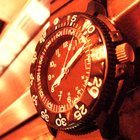
How to Check for an Original G-Shock
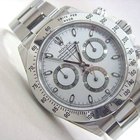
How to Spot a Fake Rolex Watch

How to Identify Gruen Watches

How to Recognize an Authentic Breitling ...

How to Tell If Your G-Shock Is Fake?
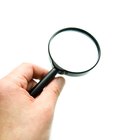
How to Tell If a Ladies Rolex Is Real

How to Identify a Real Movado Watch
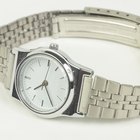
Differences Between Santos De Cartier ...

How Will I Know a Fake Panerai Watch?

How to Determine the Authenticity of ...

How to Change the Date on a Luminox 3080

How to Fix a Stalled Second Hand on a ...

How to Spot a Replica Baume Watch

How to Spot Fake Oakley Gascans
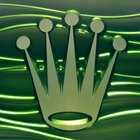
How to Identify a Fake Perpetual Oyster ...
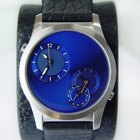
How to Tell if a Rado Is Fake

How to Identify Your Tissot

How to Tell a Real Tudor Watch
Writer Bio
Keith Evans has been writing professionally since 1994 and now works from his office outside of Orlando. He has written for various print and online publications and wrote the book, "Appearances: The Art of Class." Evans holds a Bachelor of Arts in organizational communication from Rollins College and is pursuing a Master of Business Administration in strategic leadership from Andrew Jackson University.